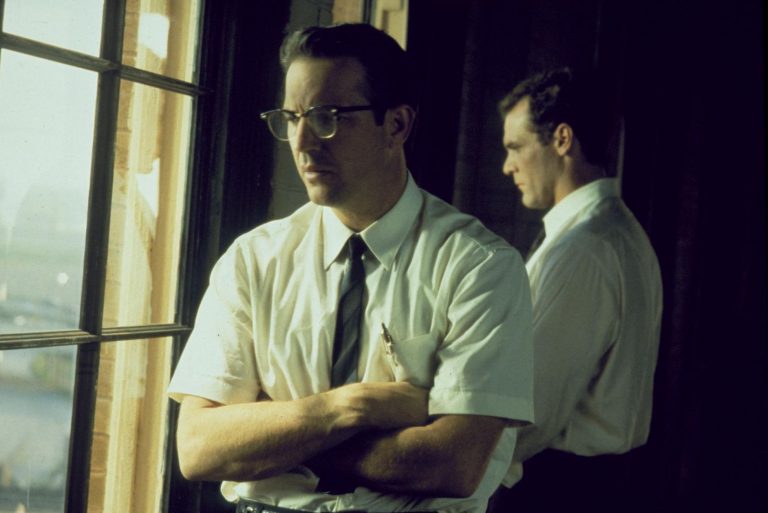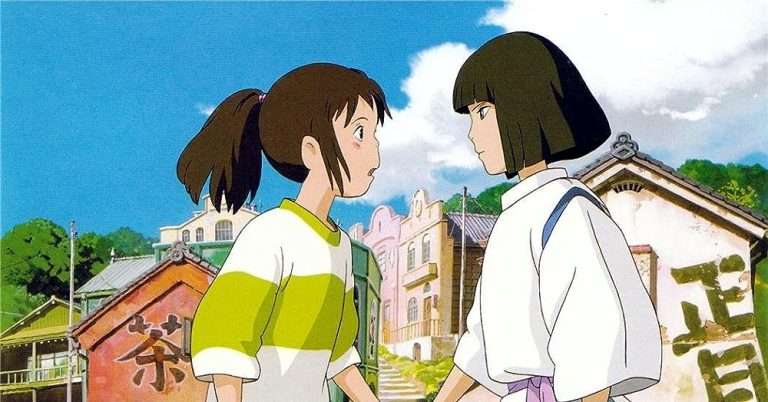On Women-Centric Buddy Movies in Malayalam Cinema: Films such as 22 Female Kottayam (2012), Udaharanam Sujatha (2017), and Sara’s (2021) are examples of New-Generational women-centric movies with nuanced narrative depictions of the Kerala woman beyond templated and reduced characters of the 2000s, penned to glorify the hypermasculine male lead. Themes surrounding the politics of gender have been recurring subjects in this new wave and are most visible in female buddy movies.
This essay will examine the representation of dyadic female friendships and how/if it has facilitated better spatial mobility in the New-Gen wave through two films: Aashiq Abu’s Rani Padmini (2015) and Girish AD’s Super Sharanya (2022).
Rani Padmini features the journey of Rani (Rima Kallingal) and Padmini (Manju Warrier) through the Himalayan landscapes as their initially alien goals unite to give rise to an everlasting friendship. Their initial end goals vary; for Padmini, she hopes to meet and resolve a personal conflict with her husband, Giri, while for Rani, the aim is to escape thugs who have threatened to kill her. The film mostly places its central duo in the cold, windy peaks of the Himalayas, thereby creating new meaning by representing women in a space previously unrepresented in Malayalam cinema. It is the furthest Rani and Padmini can be from their homes in Kerala within the geographical borders of India. It is atypical of the domestic spatial boundaries women have been allowed to transcend since time immemorial through myths like that of the Lakshmanarekha from Valmiki’s Ramayana.
The film is overt in the gender constructs it tries to demystify. Padmini is from an upper-class Hindu household and had a conservative upbringing. She is a regular temple-going, ‘modestly’ clothed, reserved belle, conscious of how her actions may tarnish the social status of her family. The opening voiceover scene that shows her contemplating the decision to travel to the Himalayas makes this evident: “Don’t give your family a bad name. You are the daughter of the reputed medic, Kaatuparambu Shankaran, and a child of tidiness and discipline. Your husband abandoned you and left for the Himalayas. Now you have no value in society”.
These words show how Padmini’s conservative upbringing has marginalized any sense of individuality and internalized the belief that her identity is framed by her relationship with the men in her life. However, Resmi Padiyan argues that even as Padmini is modeled to think in such a constraining manner, “the character’s act of ‘leaving home’ to find her husband leaves an impression of self-assertion and identity enforcement.” In the process of presenting such a sensibility at the very beginning, director Abu sets up an oppositional binary in Rani. Rani is a loud, short-tempered, unapologetic, and ambitious tomboy residing in the urban milieu of New Delhi.
She is everything that signifies castration anxiety for the patriarch who uses tradition and religion to constrain women within the spatial confines of the household and the emotional confines of the family. Initially unrelated, they have their first interaction when Rani physically subdues a man attempting to sexually harass Padmini on a bus. This initiates the elder–younger sister bond they develop through the story as they try to find Giri and simultaneously escape from the goons chasing Rani.
While Rani Padmini is the first adventure film of its kind to feature two woman characters, Super Sharanya becomes the first female coming-of-age film in Malayalam cinema to explore the communal hostel space among women in Kerala. Previously a space privileged solely to be represented in film through male bodies, Super Sharanya shows the homesickness, ragging, mundanity, frustration, and excitement associated with hostel life and the overall college experience of women. Similar to Rani Padmini, it too features a space away from the confines of the household and allows for the depiction of sisterhood and nurturance in the private space.
The narrative follows the introverted Sharanya (Anaswara Rajendran), an engineering student with a rural upbringing, low on self-esteem and confidence. Men constantly court her for her charming but submissive appearance. She seeks solace and emotional support from her four roommates (Dhaba Girls, as they call themselves), especially Sona (Mamitha Baiju). The film, while focusing primarily on how female friendships develop and sustain life throughout college years, also has the added subtheme of critiquing toxic masculinity by parodying Arjun Reddy from the film Arjun Reddy (2017), through the spoof character of Ajith Menon. Sona’s bold and outspoken attitude contrastingly complements the softly spoken and feeble demeanor of Sharanya.
Sona, who has had a more liberal upbringing being from the metro city of Ernakulam, advises Sharanya on many of the decisions she takes throughout her life during college. She does not allow Sharanya to travel anywhere beyond the college campus on her own and, in fact, does not approve of any of their roommates being in a heterosexual relationship.
Thus, both films depict central characters supporting each other and encouraging emotional growth. As mentioned, Sharanya and Padmini are introverted due to their confined upbringing. For them to safely explore the world beyond their comfortable nexus, they require the comfort and reassurance provided by their companions, Sona, and Padmini, who are more exposed to alternate cultures, people, and situations with their urban upbringings.
The relationships these characters share reaffirm Tharayil Muraleedharan’s observation that “Friendship seems feasible only between two unequal females. One of them would have the trappings of a ‘liberated’ woman capable of rendering patriarchal conventions uneasy. The other, most probably, would be a lonely and sensitive soul seeped in angst or brooding”. However, they are not without conflict as well. Rani, at one point, tries to steal Padmini’s money, and Sona and Saranya are constantly at loggerheads because of their conflicting ideologies. Nonetheless, they recuperate rather quickly, and this adds an element of nuance in representing these friendships which are not always happy, and reinforce emotional growth through struggle and disagreements.
Part of the reason why conflict may arise in their relationships is the aforementioned ‘liberated’ self that Rani and Sona exude. The opening montage in Rani Padmini depicts Rani playing in the mud, engaging in physical skirmishes with other boys, being a fan of rock music, and being athletically proficient: qualities stereotypically coded as masculine. Her mother disapproves of her tomboyish lifestyle and is concerned that her daughter may find it difficult to assimilate into a society that draws strict lines between binaries of masculinity and femininity.
At one point, she even tells Rani that she wishes she were a boy, which indicates her discomfort with the ambivalence in Rani’s gendered self. In another instance, when the goons enter Rani’s house to apprehend her, she subdues them using objects from the kitchen, like chili powder and a rolling baster. She confiscates Raja’s gun, effectively castrating him of his symbolic phallus and thereby emasculating him.
Similar too is Sona. She does not allow herself to be taken advantage of, as she is aware that her gender makes her an obvious target for exploitation. On multiple occasions, she threatens to beat up and bully people who argue against her, establishing her own dominance. On another occasion, she openly criticizes the food of a restaurant, following which she calls out an individual for intentionally barging into her on the sidewalk, stating, “it is a routine of theirs to dash into girls and feign ignorance.”
If the masculinity that Rani and Sona wish to perform is in line with Jack Halberstam’s contemporary definition that it “conjures up notions of power and legitimacy and privilege; it often refers symbolically to the power of the state and to uneven distribution of wealth,” then their actions may be understood as an effort to attain power exclusive to male figures in society. The tomboyish attitude both Padmini and Sona exude “tends to be associated with a “natural” desire for greater freedom and mobilities enjoyed by boys” and is very often “read as a sign of independence and self-motivation.”
However, while female friendships are the central focus of both films, their mainstream commercial treatment results in both films maintaining conservative female archetypes despite their external setting and dyad dynamics. In Super Sharanya, while the narrative initially focused on women in college spaces and the development of homosocial bonds, it gradually developed into a heterosexual love story between Sharanya and Deepu, marginalizing the other characters. When Sona voices her frustration at Sharanya’s actions in continuing her unhealthy relationship, Deepu threatens to rub her face against the wall if she interferes in their matters, which Sharanya candidly ignores. Sona’s relationship with Sharanya is made secondary through the introduction of Deepu. Her maternal figure is replaced with a potential husband figure, thereby eliminating the homosocial bond she persistently maintained.
Sharanya claims it is because of Deepu that she has changed so much, even as she is more or less the same girl as the beginning of the story and is anything but ‘Super.’ However, this seems to be a mere role reversal on how mainstream cinema often has plots where female characters contribute to the emotional growth of the male character and thereby acquire some form of character development. Such tropes of emotional development through heterosexual relationships undermine the homosocial bonds present within the narratives.
Similarly, in Rani Padmini, even as Padmini is angry at Giri for deserting her, she forgives him and tells him to come home safe, thereby reverting back to heteronormative bonds endorsed within the family. In the end, we do see the friendship built between Rani and Padmini maintained as they meet each other years later, and this time with Padmini’s baby.
But their meeting in front of the Qutub Minar seems to focus on the structure itself, which may be a phallic symbol to indicate the masculine presence, which is an unavoidable part of their relationship. At the same time, very little space is provided for them to develop their friendship, making audiences question why they go to such lengths to help one another. Even the ‘unconventional’ women cannot seriously critique the patriarchal discourse; Rani doesn’t inspire Padmini to seek an existence beyond her husband, and Sona loses Sharanya to Deepu. The female friendships remain a temporary episode in the lives of the protagonists, perhaps paving the way for a more ‘stable’ heterosexual bond.
Thus, these films satisfy the immediate need for women-centric films but do nothing to address the ideologies behind gender politics. Both films feign subversiveness with some tropes that may prick the contained bubble of patriarchy but ultimately do not burst it. Rani does not question the heterosexual reunion of Padmini and Giri, even though Giri is identified as a deserter. Sona’s rebellion against the reunion of Sharanya and Deepu is made into an instance of humor rather than being dealt with seriously by the film. Thus, by “refusing to question patriarchy, these films perpetuate and reinforce a double standard – women as independent but continuing to be victims of patriarchy” (Gopinath & Raj, 2015). Feminist film critic Karen Hollinger perfectly summarises the nature of such mainstream female friendship films stating that;
“The great majority of female friendship films portray sentimental, erotic, or social relationships that fall into the apolitical, psychoanalytic category. They might easily be condemned as mere instruments of patriarchal ideology, inculcating in female spectators a view of women as emotional, irrational, socially conforming creatures who find complete fulfillment in the private sphere of feeling.”
These films are dangerous as they appear to produce dissenting debates which support women’s emancipation and come across as if some conflict has been resolved. But the situation ultimately remains the same and reaffirms the status quo under the guise of change.



![The Handmaid’s Tale [2017- ]: A Reflection of Both the Past and the Future](https://79468c92.delivery.rocketcdn.me/wp-content/uploads/2021/05/handmaidstale306elisabethmoss-3-768x512.jpg)


